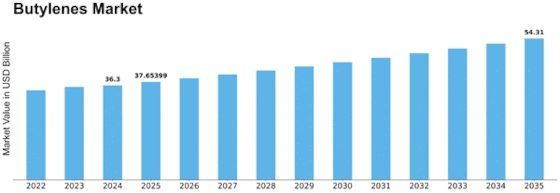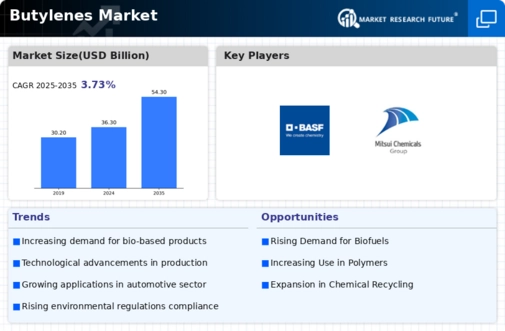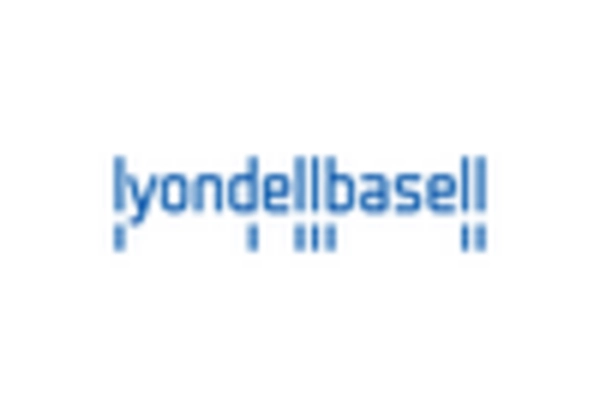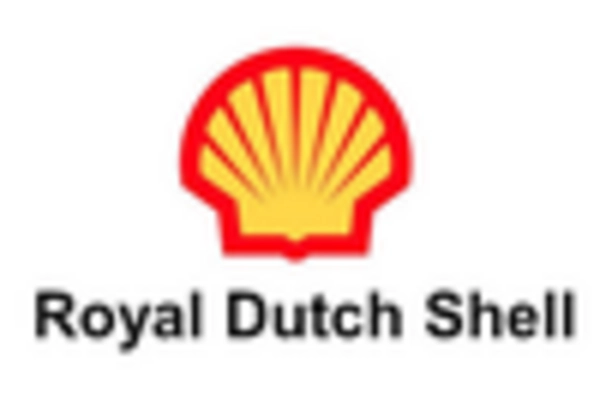Butylenes Size
Butylenes Market Growth Projections and Opportunities
The Butylenes market faces challenges from a host of factors which exert their influences on the market behavior. The primary determinant is the global consumption of petrochemical products, where Butylenes, being one of the most commonly used petrochemicals, go into making various petrochemical products. Economic factors generate direct influence on them, consumer income being the most important one and then by the overall quantity of consumer goods demanded. A strong coherence between price fluctuations in oil and the price of butylene production is visible, affecting market trends.
However, butylenes market size reached the amount of $ 34.43 bn during the last year. The butylene market is poised to hike from the projected level of USD 34.99 Billion in 2023 to USD 48.64 Billion in 2032 with a CAGR value of 3.73%.
As an important part of the Butylenes industry, the environmental regulations also play a vital role there. One of the key factors that promote innovation and promotes the development of clean production processes is through the stringent regulations on emissions and environmental sustainability. The companies in industry market must be flexible to these policies in order to stay competitive and to meet changing consumer tastes regarding green products.
Besides so, technology dominates the processes and performance of the market. Although ongoing reinventing of how things are made makes them cheaper and easier to bring them to market, it also drives competition. There is a section which studies the R&D activities on the Butylene properties and new applications. This drives market growth and dynamism.
Among the factors contributed to the politics of geography is the way market for Butylenes develops. Trade policies, international politics, and geopolitical challenges can affect the location or if a country can export in the world market which is directly connected with the pricing and the stability of the supply chain.
The trends and preferences of the butylene consumers similarly entail a great impact on the market scenario. Upgrading environmental circumstances and boosting the requirement for green products gives companies no choice but to innovate eco-friendly practices, being transferred along the supply chain. Mass demand for different purposes of synthetic rubber or plastics production from the consumer trend is another factor which forms market demand.
Furthermore, industry environment has an influence on market dynamics also. Through the presence of key player status, market share and strategic alliances, pricing strategies and product development are shaped. The disruptive nature of intense market competition promotes product innovation while companies compete with each other to produce distinctive products and gain an edge.
Law and order and standards are the main market factors contributing to the production, distribution, and marketing of bully gens. Maintaining industry requirements will guarantee the quality of the product, safety, and compliance to the environmental laws resulting in high confidence of consumers.
The disrupting of the supply chain is can be manifested through a profound impact on the Butylenes market. For example, events like natural catastrophes, geopolitical conflicts, and global health issues can change Butylenes' consumption and transportation, causing inconstancy in the supply and demand.


















Leave a Comment